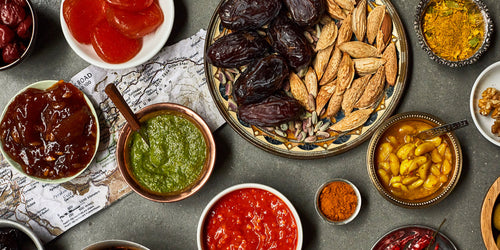Your Cart is Empty
For Korean-American chef and television star Judy Joo, ‘mainstream’ isn’t a dirty word. That’s exactly where she wants to see Korean cooking in America, whether it takes the form of a traditional banchan spread at your table or a pork belly cheesesteak, glistening with gochujang.
On her Cooking Channel show, Korean Food Made Simple, Joo demystified key cooking concepts to show just how straightforward they are to adopt in home kitchens. On Iron Chef UK and The Next Iron Chef, she showed off the intricate, sophisticated sides of Korean cuisine, which she continues as the patron chef of London’s Jinjuu restaurant. And in her 2016 cookbook, she gave readers the concrete tools and advice they need to make those banchan and cheesesteaks possible.
That’s a lot for a one-time banker who made a mid-career switch to culinary school and stations at some of the country’s most prestigious test kitchens. But it’s all part of a greater mission to make space for Korean culture in the mainstream American food world. Because as a child of the Jersey suburbs who now splits her time between New York, London, and parts of Asia, Korean cooking is inseparable from her American heritage.
After the release of her second book, Judy Joo’s Korean Soul Food, we chatted with the globetrotting chef about some essential Korean ingredients worth adding to every pantry—and how to make them a part of your own personal mainstream. — Caravan eds.
Judy Joo’s Korean Essentials
Doenjang (fermented soybean paste)
Like Japanese miso, doenjang is a brown, richly flavored paste made from fermented soybeans, but with a more heady flavor and often a coarser texture. Doenjang production dates back over 2,000 years in Korea. Traditionally, soybeans are boiled, pressed into dense bricks called meju, and then hung to dry and naturally ferment. They’re then fermented further in salted water for up to six months, which reverts the bricks to a spreadable paste. This long and careful fermentation process yields an intensely umami packed condiment used for soups, stews, marinades, and salad dressings. Shop doenjang.
Ganjang (soy sauce)
Essentially Korean soy sauce, ganjang is a byproduct of making doenjang. Once the meju bricks have finished fermenting in salted water, the liquid on top is drained off. This liquid is ganjang, and high quality versions may be aged for years to enrich and concentrate their flavors; the longer they’re aged, the more complex they become. Dark soy sauce is used for hearty dishes while lighter soy sauce is best for seasoning vegetables. Shop ganjang.
Gochugaru (chile flakes)
The ubiquitous Korean crushed red pepper literally translates to “chile powder". Traditionally sun-dried, seeded, and crushed, the chiles come in a range of heat levels and textures: mild to spicy, coarse to fine. I like vibrant red, medium spicy, coarse flakes, and I use them on top of everything. Store gochugaru in an airtight container in the freezer to preserve its pungency. Shop gochugaru.
Gochujang (fermented chile paste)
This thick red paste is typically made from gochugaru flakes, dried fermented soybean powder, sweet rice powder, and salt. Traditionally, the paste is fermented further to marry these flavors and enrich its funk, resulting in an endlessly versatile condiment used throughout Korean cooking. Use it in anything where you want a little spice and serious flavor. Shop gochujang.
Silgochu (Chile threads)
These bright red threads could easily be mistaken for saffron, but silgochu are made from dried chiles sliced painstakingly thin. In addition to heat, they add a dramatic finishing touch to any dish. Shop silgochu.
Sikcho (Korean vinegars)
Korean cooking is notable for its use of a variety of fruit vinegars, which add a vital tartness and astringency to the cuisine’s bold flavors. Apple and rice vinegar are the most common for cooking, but high quality fig, plum, and gingko vinegars add a special touch to drinks, cocktails, desserts and savory dishes. Shop sikcho.
Chamgireum (Toasted sesame oil)
This intense, earthy oil is meant for seasoning finished dishes, not cooking. It has a rich nutty aroma and unmistakable flavor. Some Korean producers also make an oil from toasted perilla seeds, a common Korean ingredient; this oil tends to be a little more grassy in flavor. Shop chamgireum.
Pyogo-buseot (Dried shiitake mushrooms)
Add dried mushrooms to any soup or broth for an extra kick of rich umami. In their dried form, the mushrooms will keep indefinitely, and the rehydrated caps can be sliced for stir fries and salads afterward. Shop pyogo-buseot.
Ssalgaru (Rice flour)
Called ssalgaru in Korean, I use this to add crispness to anything fried, either in addition to all purpose flour or as a total substitute, which is helpful for making a dish gluten free. Take note that rice flour is not interchangeable with glutinous rice flour, which is made from sticky rice, and won’t have contribute the same crispiness to a batter. Shop ssalgaru.














